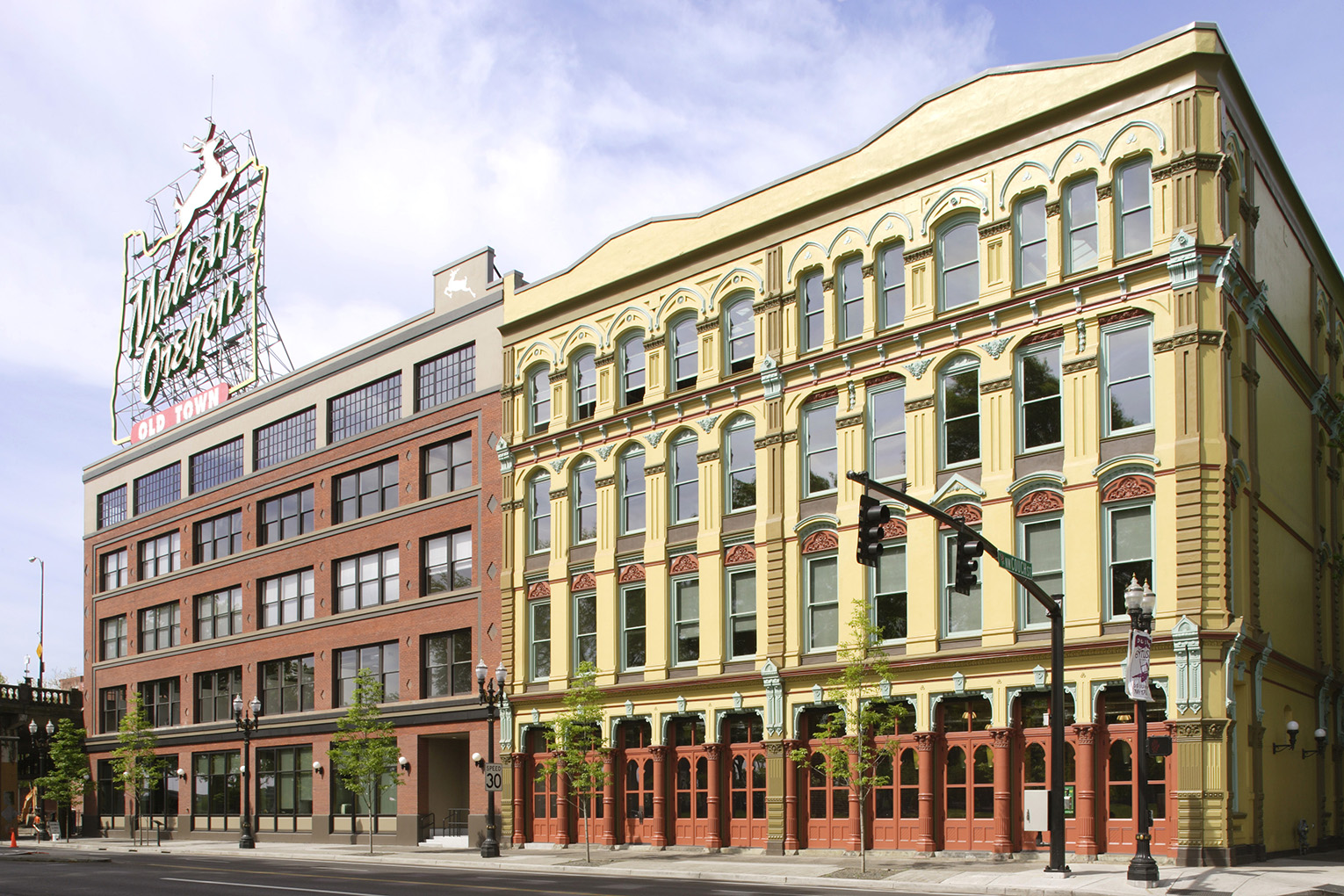Working in collaboration with developer Venerable Properties, FFA led the design team to rehabilitate and integrate three separate historic buildings into one complex for the new University of Oregon (UO) Portland campus. The complex houses UO’s Portland satellite Master’s programs including Architecture/Allied Arts, Journalism and Law as well as various student and administrative service functions. In addition to more traditional classroom and office spaces, the White Stag houses a variety of specialty spaces that strengthen UO’s program offerings.
As the buildings had been largely unoccupied for almost 20 years prior to the start of the project, much of the building fabric was in a state of disrepair. A full seismic upgrade as well as significant rehabilitation of the building envelope were required. The vintage of the buildings, paired with the fact that they were not initially built to function cohesively, meant that the design team was confronted with myriad unconventional conditions.
The three original buildings are contributing properties to the Skidmore/Old Town Historic District and the developer received Historic Preservation Tax Incentives at the 20% level which required stringent review by Portland Landmarks Commission, the State Historic Preservation Office as well as the National Park Service. In addition, the building received LEED Gold certification requiring a great deal of coordination and tracking by both FFA and Green Building Services (GBS). GBS was actively involved throughout the project to keep the team informed of when credits might be gained or lost and offering potential solutions. FFA and the entire project team worked together to find areas of symbiosis between the existing building and sustainability.
2009
143,000 sf
Portland Chapter AIA, Craftsmanship Award;
Portland Chapter AIA, Mayor’s Award for Design Excellence;
Northwest Pacific Region Chapter AIA, Award of Citation;
LEED Gold Certified






BREATHING NEW LIFE INTO HISTORIC BUILDINGS
The team looked carefully throughout the space for existing building characteristics that could be enhanced. An existing light well provided a perfect footprint for the rainwater harvesting tank. The existing north facing monitor window on the roof provided great daylight for the 5th floor and provided south facing sloped surface that were structured and wired for future PV panels.
Finding ways to manage water and air infiltration required a team that was able to think outside of the box. FFA and our consultant team collaborated with the CMGC to investigate existing conditions and find creative solutions to achieve a sound and highly energy-efficient building envelope.








SPACES TAILORED FOR DESIGNERS
The White Stag Block houses more than just traditional classrooms and office spaces. The complex is home to UO’s satellite Master’s Program for Architecture/Allied Arts, as well as a number of specialty studios for makers. Students will find a state-of-the-art model shop, digital animation and recording studio, and a White Box multi-media gallery at their disposal.






MATERIALITY
The project made the most of the materials already present in the building and made creative reuse of salvaged materials. For example, existing heavy fir timbers that were removed to create floor openings were cut down to make wood wall base and trim. Brick that was salvaged from wall openings was reused for in-fill and repair. Yet there were several unique moments of reflecting modern materiality, such as the cold-rolled steel panels at the elevator lobby.



